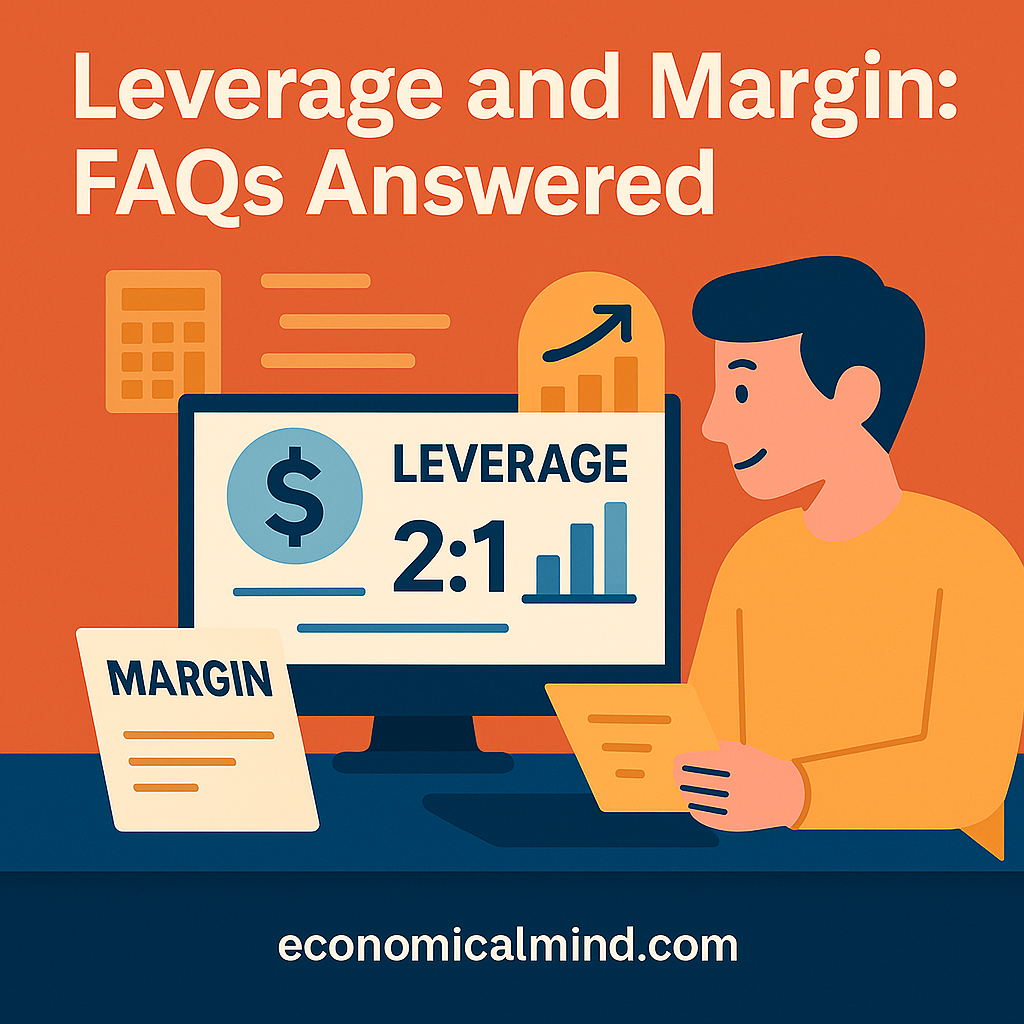
Investing with borrowed money can amplify your profits — but it can also magnify your losses. Concepts like leverage and margin are often misunderstood, leading some investors to take on unnecessary risk.
In this guide, we’ll break down what leverage and margin mean, how they work, and what you should know before using them in your investment strategy.
What Is Leverage in Investing?
Leverage means using borrowed funds to increase your potential return on investment. By using someone else’s money — usually from a broker or lender — you can control a larger position than you could with your own capital alone.
For example, if you invest $10,000 of your own money and borrow another $10,000, you now control $20,000 in assets. If the investment rises 10%, you earn $2,000, doubling your return on equity.
But the reverse is also true — if the investment drops 10%, you lose $2,000, or 20% of your initial capital.
What Is Margin and How Does It Work?
A margin account allows you to borrow money from your broker to buy securities. The securities in your account serve as collateral for the loan.
There are two key terms to understand:
- Initial margin: The percentage of the purchase price you must deposit (often 50%).
- Maintenance margin: The minimum equity you must maintain in your account (typically 25%).
If your account value falls below the maintenance margin, you’ll get a margin call — meaning you must deposit more funds or sell securities to restore your balance.
What Are the Risks of Using Leverage or Margin?
While leverage can amplify returns, it also increases your risk exposure. Common pitfalls include:
- Magnified losses: Even small market moves can trigger large percentage losses.
- Margin calls: Forced liquidation can lock in losses if you can’t add funds quickly.
- Interest costs: Borrowed money isn’t free — margin loans accrue daily interest.
- Emotional stress: High leverage often leads to emotional decision-making and panic selling.
For most retail investors, it’s wise to start small — or avoid leverage entirely until you fully understand the mechanics.
How Much Leverage Is Safe to Use?
There’s no one-size-fits-all answer. Conservative investors may use little to no leverage, while professionals carefully manage higher ratios with strict risk controls.
A simple rule: Never risk more than you can afford to lose.
If you’re new, stick to a leverage ratio under 1.5x (meaning 50% borrowed funds) and monitor your account regularly.
Can Leverage Be Used Outside of Margin Accounts?
Yes. Leverage isn’t limited to borrowing cash — it can take other forms:
- Options and futures contracts provide built-in leverage without borrowing.
- Leveraged ETFs use derivatives to amplify daily index movements.
- Real estate investors use mortgages to leverage property purchases.
Each comes with its own risks, so always understand the underlying exposure before investing.
What Are Some Alternatives to Using Leverage?
If you want higher returns without borrowing, consider:
- Dollar-cost averaging: Gradually investing over time reduces volatility risk.
- Diversification: Spreading assets across sectors and regions reduces concentration.
- Long-term compounding: Patience and consistency can achieve strong results without added risk.
Building wealth slowly but steadily is often more sustainable than chasing quick gains with leverage.
What Tools and Platforms Can Help Manage Margin Risk?
Several platforms help track leverage exposure and manage margin safety:
- Interactive Brokers – advanced margin calculators and risk tools
- TD Ameritrade (Thinkorswim) – built-in position analysis and alerts
- TradingView – customizable visualizations for leveraged positions
- Portfolio Visualizer – simulations of leveraged portfolio performance
These tools help you understand “what if” scenarios before they happen.
Key Takeaway
Leverage and margin can be powerful tools — but they’re double-edged swords. Used responsibly, they can boost returns and flexibility. Misused, they can wipe out years of gains in days.
Start small, understand your risks, and always prioritize capital preservation over fast profits.
